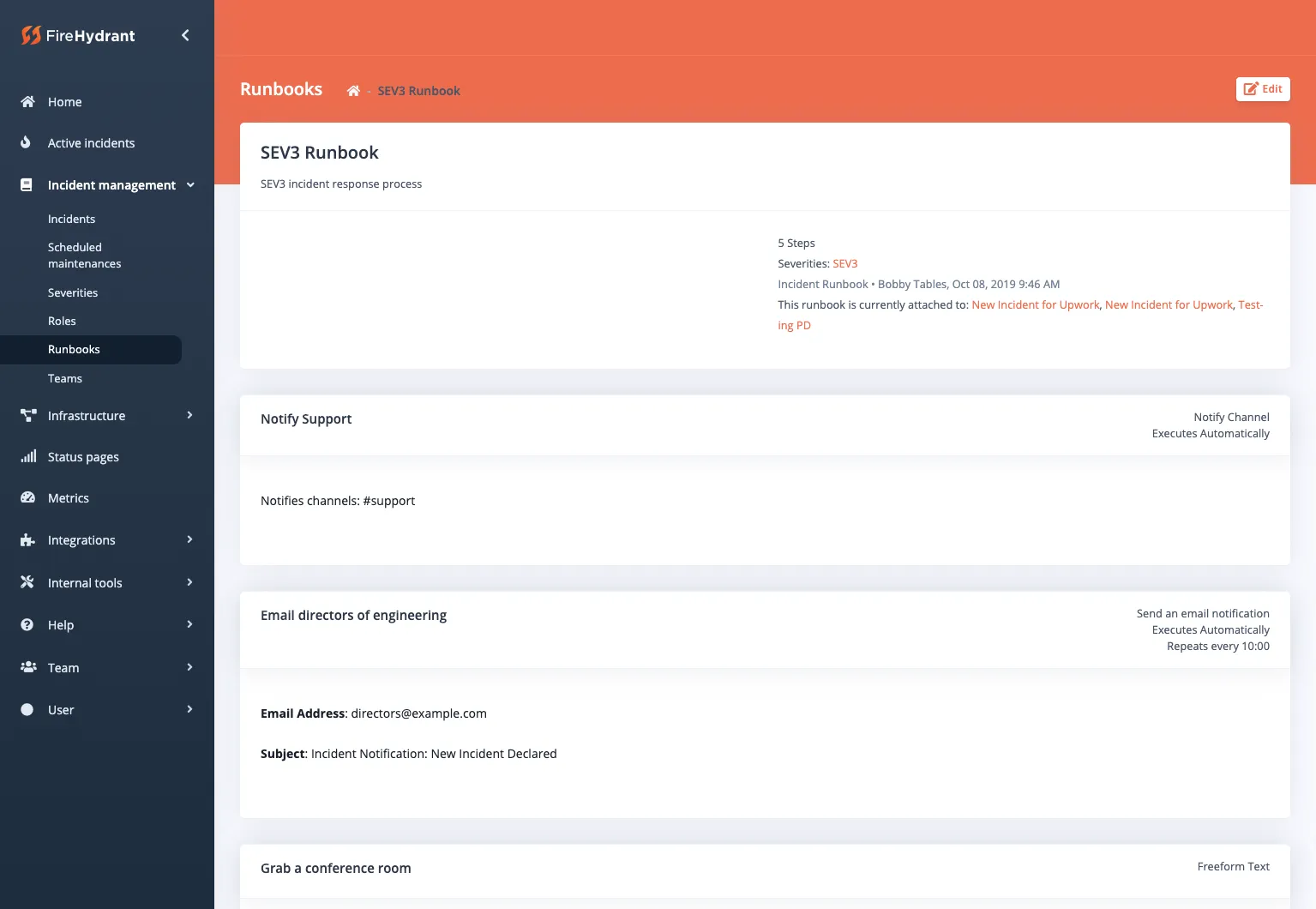
FireHydrant Runbooks Re-Design
Speed Up the critical first minutes when an incident occurs
About the problem
Designing the FireHydrant Runbooks Experience: Streamlining Incident Response
In high-stakes incident management, every second counts. Teams need a structured yet flexible way to respond quickly, reduce errors, and maintain consistency across incidents. However, many organizations struggle with manual, inconsistent workflows, leading to delays, confusion, and increased downtime. That’s where Runbooks come in.
The Before
This is what FireHydrant customer’s were using before they brought me in to improve the experience (OLD)
My design role
I designed the Runbooks experience to help teams automate and streamline their incident response processes. Runbooks empower engineering and operations teams by providing structured, repeatable workflows for managing incidents, reducing manual effort, and ensuring consistency in high-pressure situations.
Designing this experience, I focused on:
Clarity & Usability – Making it intuitive for teams to create, modify, and execute Runbooks efficiently.
Flexibility – Allowing teams to customize workflows to fit their unique incident management needs.
Automation & Efficiency – Reducing cognitive load by automating repetitive tasks, enabling teams to focus on resolution rather than process.
The impact – Runbooks help teams respond faster, minimize downtime, and improve reliability, ultimately leading to stronger, more resilient systems.
Scroll through my final design below.
The Results
More customers were signing contracts with FireHydrant. FireHydrant customers reported saving 30 to 90 minutes per incident by utilizing FireHydrant's Runbooks.




